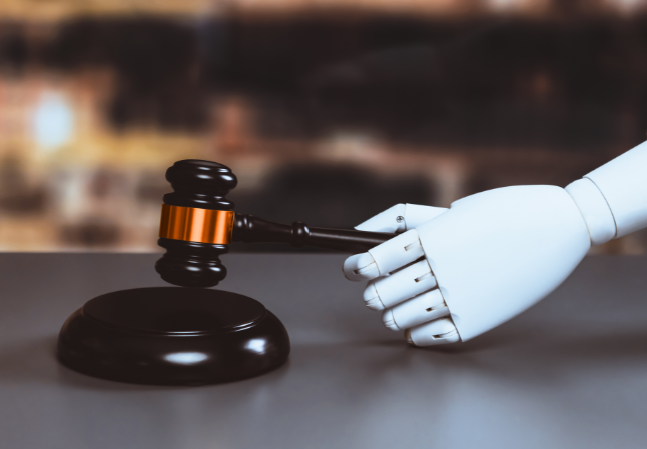Welcome! Save 30% on all CLE, CPE, and Professional Skills webinars, plus 15% off any annual pass with code HOLIDAY25
About the Course
Introduction
This CLE course will examine proving or limiting what is often the largest category of damages in personal injury cases: future medical expenses. The panel will first focus on the pitfalls and strengths of studies that purport to establish a causal connection between a present injury and some aggravated condition or new disease that may arise in the future. The panel will then present strategies and best practices for ensuring that future expenses awarded are appropriate but not excessive, and what type of evidence juries are allowed to consider.
Description
If a plaintiff can prove a defendant's liability in a personal injury case, he or she can potentially recover future medical expenses. Those future expenses may reflect additional treatment arising for new or different diseases or conditions caused by the original injury. To recover future medical costs, especially those related to a progression of the original injury, the plaintiff must demonstrate to a reasonable "certainty" or a reasonable "probability" that the injured party will require additional treatment or develop a particular disease or condition.
Plaintiffs' experts often cite studies showing that people with similar injuries or exposure as the plaintiff have a greater risk of developing a condition or disease. Attorneys defending against this notion must critically analyze scientific literature and studies on which the plaintiff expert relies. They must understand the difference between risk and causation, and the difference between the statistical confidence or certainty in the study result, and the statistical likelihood of adverse future events indicated by the study.
Anticipated future medical costs must be reasonable. When quantifying future damages, counsel must grasp the evidence that will be allowed. Some courts allow juries to consider "billed" or "full price" costs (regardless whether those amounts are ever paid), while others limit to "market rates," i.e., reduced rates negotiated between healthcare providers and insurers. The defense may argue that the negotiated rates apply to future treatment, which plaintiffs must be prepared to rebut.
Listen as our distinguished panel guides personal injury attorneys on proving and disproving causation of future medical expenses. The panel will discuss best practices for calculating damages, conducting voir dire, and preparing jury instructions before trial.
Presented By

Mr. Fleischman has expertise in litigating commercial disputes (breach of contract, fraud, business interference) and has substantive knowledge in professional liability, anti-SLAPP, insurance coverage, real estate, unfair competition (Cal. Bus. & Prof. Code § 17200), takings, and mobile home park law. He also has expertise in litigating the proper standards for the recovery of medical damages in personal injury cases under Howell v. Hamilton Meats & Provisions, Inc. (2011) and its progeny.

Mr. Watson is a partner at the firm, where he has practiced since 1992. He has been a California State Bar Certified Appellate Specialist since the first year the State Bar offered certification in 1996. Mr. Watson has prepared the appellate updates on healthcare law for both the California Society for Healthcare Attorneys and the Health Law Committee of the California Lawyers Association Business Law section since 2014, and from 2007 to 2012 he prepared the appellate updates for the Insurance Law Committee of the California State Bar Business Law Section. In addition to working on numerous cases in the California Court of Appeal, the Ninth Circuit Court of Appeals, and appellate courts in other jurisdictions, he has extensive experience litigating before the California Supreme Court as appellate counsel for both parties and amici curiae.
-
This 90-minute webinar is eligible in most states for 1.5 CLE credits.
-
Live Online
On Demand
Date + Time
- event
Wednesday, November 4, 2020
- schedule
1:00 p.m. ET./10:00 a.m. PT
- How proof of present medical expenses differs from future expenses
- The role of epidemiology in establishing causation for future conditions
- Correlation vs. causation vs. statistical significance
- Methodologies in epidemiology
- Best practices for defending and challenging causation experts
- Predicting and calculating future medical costs
- Plaintiff strategies
- Defense strategies
The panel will examine these and other key issues:
- What is the burden of proof to recover for future medical expenses when they are and are not directly related to the injury?
- What is the difference between relative risk and causation?
- How should epidemiological studies be interpreted?
- Does the probability of developing a future disease impact other types of economic damages?
- Is a "market rate" or "billed rate" the more appropriate measure of medical expenses?
Unlimited access to premium CLE courses:
- Annual access
- Available live and on-demand
- Best for attorneys and legal professionals
Unlimited access to premium CPE courses.:
- Annual access
- Available live and on-demand
- Best for CPAs and tax professionals
Unlimited access to premium CLE, CPE, Professional Skills and Practice-Ready courses.:
- Annual access
- Available live and on-demand
- Best for legal, accounting, and tax professionals
Unlimited access to Professional Skills and Practice-Ready courses:
- Annual access
- Available on-demand
- Best for new attorneys
Related Courses

Medicare and Medicaid 2026 Reimbursement Requirements: Key Changes Affecting Personal Injury Lawyers
Thursday, January 29, 2026
1:00 p.m. ET/10:00 a.m. PT

Medicare/Medicaid Challenges in Personal Injury Claim Settlements
Available On-Demand

Medicare and Medicaid Liens in Personal Injury Cases
Available On-Demand
Recommended Resources

Making Continuing Education Work for You, Anytime, Anywhere
- Learning & Development
- Career Advancement

Getting the Most Out of BARBRI Resources
- Learning & Development
- Business & Professional Skills
- Talent Development

